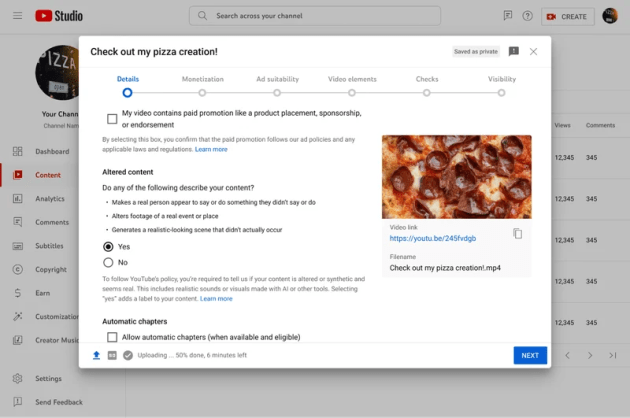YouTube tells content creators to label AI content
YouTube has announced that it will require content creators to label AI-generated content that viewers could mistake for being real.
The Google-owned company says that content a viewer could “easily mistake for a real person, place, or event and is made with altered or synthetic media, including generative AI” must now have a label that will appear in the expanded description or on the front of the video player.

The company says a new tool will appear in Creator Studio requiring video makers to disclose when realistic-looking content appears in their video that was generated with artificial intelligence.
The company defined three types of content that must now be labelled:
- Using the likeness of a realistic person: Digitally altering content to replace the face of one individual with another’s or synthetically generating a person’s voice to narrate a video
- Altering footage of real events or places: Such as making it appear as if a real building caught fire, or altering a real cityscape to make it appear different than in reality
- Generating realistic scenes: Showing a realistic depiction of fictional major events, like a tornado moving toward a real town.
However, YouTube says it doesn’t require creators to label every piece of AI-generated content. YouTube says it won’t require creators to disclose if generative AI was used for productivity, like generating scripts, content ideas, or automatic captions.
In addition, footage that is clearly unrealistic, or animations; including special effects, won't need an AI tag.
“The new label is meant to strengthen transparency with viewers and build trust between creators and their audience,” says YouTube on its blog.
YouTube will begin to roll out the labels shortly, and notes that the company may add a label to a video even when the creator hasn’t disclosed it.
The announcement comes as AI video generators have begun to roll-out and are expected to become more widely used.
OpenAI, for example, announced its Sora text-to-video model last month, with Runway Pika and Google's Lumiere also emerging recently.
Cover image: Creative Commons/Freestocks.org

